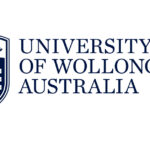Mental disorders are the highest burden of disease for 15-24 year olds, accounting for almost half of all disease. Rates of eating disorders are above the Victorian average in some inner and outer-suburban areas.
Young people who may be at particular risk of experiencing psychological distress include:
- Aboriginal and Torres Strait Islander children, particularly when they are exposed to racism.
- Culturally and linguistically diverse and/or refugee children and young people who have endured traumatic exposure prior to migration, and who experience difficulties associated with resettlement.
- Lesbian, gay, bisexual, transgender, intersex and queer (LGBTIQ) young people, particularly when they have been exposed to homophobia.
Data from headspace, the National Youth Mental Health Foundation, identified that in comparison to the rest of Australia, service users from the North Western Melbourne Primary Health Network region had:
- Greater progression of mental illness
- Generally higher outcomes on the Kessler Psychological Distress Scale (K10)
- Generally lower outcomes on the Social and Occupational Functioning Assessment Scale
- Higher average visit frequency












